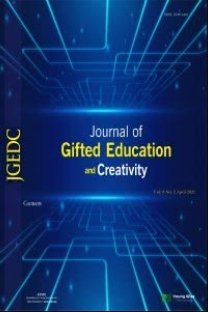Okul Öncesi 4-6 Yaş Grubu Çocukların Bağlanma Stilleri İle Sosyal Beceri Düzeyi Ve Oyun Davranışı Arasındaki İlişkinin İncelenmesi
Okul öncesi, Bağlanma stilleri, Sosyal beceri düzeyi, Oyun davranışı
Investigation of the Relationship Between Attachment Styles and Social Skill Level and Play Behavior of Preschool 4-6 Years Old Children
pre-school, attachment styles, social skill level, game behavior,
___
- Ainsworth, M. D. (1969). Object relations, dependency and attachment: A theoretical revie of infant-mother relationships. Child Development(40), 969–1025.
- Ainsworth, M. D., Blehar, M. C., Waters, E., & Wall, S. (1978). Patterns of attachment. American Psychologist, 8(49), 332-329.
- Avcıoğlu, H. (2007). Sosyal Becerileri Değerlendirme Ölçeğinin (4–6 yaş) Geçerlik ve Güvenirlik Çalışması. Abant İzzet Baysal Üniversitesi Eğitim Fakültesi Dergisi, 7(2), 87-101.
- Bacanlı, H. (2014). Sosyal Beceri Eğitimi. Ankara: Pegem Akademi.
- Barone, L. ve Lionetti, F. (2012). Attachment and emotional understanding: a study on late-adopted preschoolers and their parents. Child: care, health and development, 38(5), 690-696.
- Belsky, J. ve Cassidy, J. (1994). “Attachment: theory and evidence”, M. Rutter ve D. Hay (Edt). Development Through Life: A Handbook for Clinicians, 373-402. Oxford: Blackwell.
- Bowlby, J. (1980). Attachmentandloss: Vol. 3. Sadnessanddepression. New York: Basic Books.
- Bowlby, J. (2012). Bağlanma: bağlanma ve kaybetme 1. (T. V. Soylu, Çev.) İstanbul: Pinhan Yayıncılık.
- Büyüköztürk, Ş., Çakmak, E. K., Akgün, Ö. E., Karadeniz, Ş., & Demirel, F. (2008). Bilimsel Araştırma Yöntemleri. Ankara: Pegem Atıf İndeksi.
- Coleman, P. K. (2003). Perceptions of parent-child attachment, social self-efficacy, and peer relationships in middle childhood. Infant and Child Development, 12(4), 351-368.
- Colman, R. A. ve Thompson, R. A. (2002). Attachment security and the problem-solving behaviors of mothers and children. Merrill-Palmer Quarterly,48(4), 337-359.
- Çalışandemir, F. (2014). Oyun ve Özellikleri. H. G. Ogelman içinde, Yaşamın İlk Yıllarında Oyun: Oyuna Çok Yönlü Bakış (s. 1-15). Ankara: Pegem Akademi.
- Deniz, M. E., Hamarta, E., & Arı, R. (2005). “An Investigation Of Social Skills And Loneliness Levels of University Students With Respect to Their Attachment Styles In A Sample Of Turkish Students”. SocialBehaviorandPersonality, 33 (1), 19-32.
- Ekici, F. (2015). “Okul Öncesi Eğitime Devam Eden Çocukların Sosyal Becerileri İle Aile Özellikleri Arasındaki İlişkinin İncelenmesi”, Karadeniz Sosyal Bilimler Dergisi, 7,(02).
- Hazan, C., & Shaver, P. (1994). Attachment as an organizational framework for research on close relationships. Psychological Inquiry, 3(5), 1-22.
- Karasar, N. (1995). Bilimsel araştırma yöntemi: kavramlar-ilkeler-teknikler. İstanbul: Nobel Yayın Dağıtım.
- Seven, S. (2006). 6 Yaş Çocuklarının Sosyal Beceri Düzeyleri İle Bağlanma Durumları Arasındaki İlişkilerin İncelenmesi, Gazi Üniversitesi, Doktora Tezi, Ankara.
- Shaffer, D. R. (2008). Social and personality development, Cengage Learning. USA: Wadsworth.
- Yüksel, G. (1999). Sosyal Beceri Eğitiminin Üniversite Öğrencilerinin Sosyal Beceri Düzeylerine Etkisi. Türk Psikolojik Danışma ve Rehberlik Dergisi, 37-47.
- Yayın Aralığı: Yılda 4 Sayı
- Başlangıç: 2014
- Yayıncı: Genç Bilge Yayıncılık
İlknur KÜÇÜK ŞAHİN, Hasan Said TORTOP
2018 TÜRKÇE ÖĞRETİM PROGRAMI KAZANIMLARI İLE 1. SINIF TÜRKÇE DERS KİTABI ETKİNLİKLERİNİN İNCELENMESİ
ÜSTÜN YETENEKLİ VE NORMAL ÖĞRENCİLERİN BENLİK SAYGISI VE BAĞLANMA DÜZEYLERİ
Osman KARTEL, Hasan Said TORTOP
Ayu NOVIANA, Abdurrahman ABDURRAHMAN, Undang ROSIDIN, Kartini HERLINA
Beni HABİBİ, Sitti HARTINAH, Rofiqul UMAM, Muhamad SYAZALİ, Fitria LESTARI, Abdurrahman ABDURRAHMAN, Durrul JAUHARIYAH
özel eğitimde matematik ile ilgili yapılan çalışmaların incelenmesi
Tinatini GOBADZE, Ayten DÜZKANTAR
Öğretmenlerin yaratıcılık kavramı ile ilgili sahip oldukları mitler ve görüşler
Üstün yetenekli çocukların dijital oyunlara yönelik görüşlerinin incelenmesi
